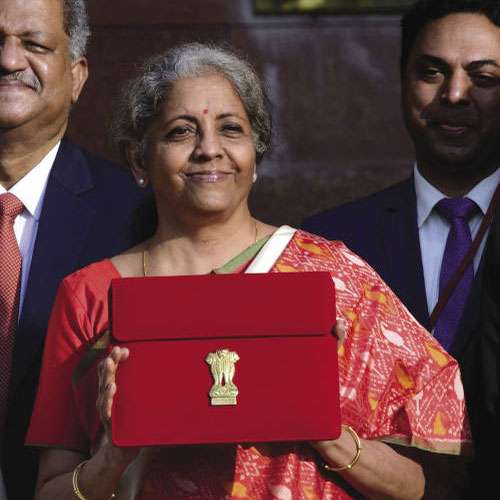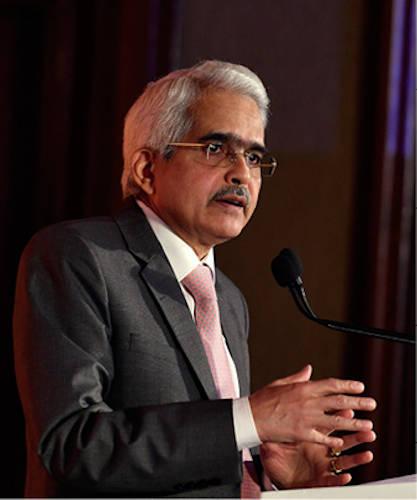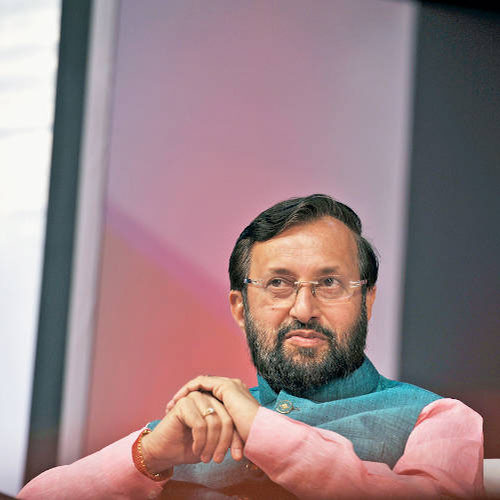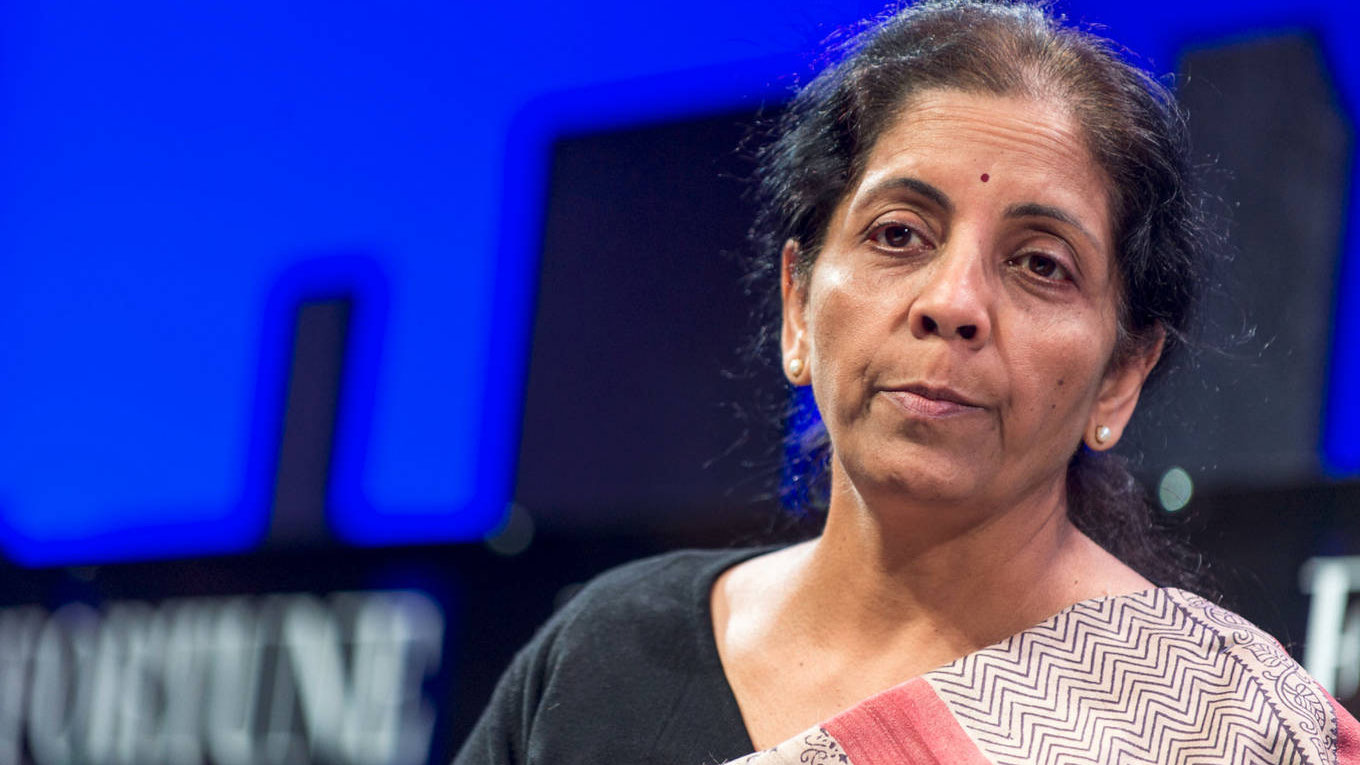-

Sitharaman: calculations gone awry
Fresh stimulus package
There is talk of a fresh Covid-19 economic stimulus package to tackle the impact of the second wave by improving the consumer sentiment. Sitharaman recently held discussions with economists in this connection. The relief package is reportedly being prepared to support sectors like tourism, aviation and hospitality sectors, which will have an immediate domino effect, along with small and medium-sized companies. The discussions are still in the early stages and no timeline has been shared for the announcement of the package. According to brokerage firm Bernstein, the government could roll out the stimulus package for small businesses during the beginning of the next unlock stage.
Sitharaman feels that it is too early to say when the package will be announced. “The (Union) Budget has been announced only on 1 February, we are in May, we have the entire year to go, the second wave has come and, while there’s not a complete lockdown, states have had lockdowns. So, we are getting inputs, we need to take a call. We need to understand where the impact is, how much it is and so on. That process of consulting, the states consulting industry, is going on,” she said, during a press briefing after the recent GST Council meeting.
The problem is that, while daily Covid-19 cases have dropped over the last two weeks, the infection rate remains high. Thus, states are hesitating to begin the reopening process. The Delhi government is one of the few states, which announced plans to gingerly open up factories and construction activity from 31 May.
RBI under pressure
Side by side, Reserve Bank of India (RBI) is under pressure to ease loan repayment rules for sectors that have been badly hit by the second Covid-19 wave. So far, in response to the second wave, the government has set aside only Rs26,000 crore for free food distribution to 800 million people. But, with the RBI recently transferring a record dividend of Rs99,122 crore to the government for 2020-21, more action is expected.
Analysts say this will help the government extend support to the pandemic-hit industries, tide over the revenue losses from lockdowns and bail out the poor people. In 2019-20, the RBI had paid only Rs57,128 crore as dividend to the government and the finance minister had budgeted only Rs45,000 crore from the central bank. The higher payout followed the Bimal Jalan panel report that had set a new economic framework capital buffer for the central bank, along with the contingency risk buffer at 5.5 per cent.
By any reckoning, North Block has a tough task at hand in shoring up the economy via just the budget. The budget could have been a launch pad for rebuilding the economy. It turned out to be a copybook exercise followed by successive FMs, with a few flourishes thrown in. Sitharaman chose to play it safe. Of course, markets had cheered the ‘no-harm’ budget, as she was liberal with the fiscal deficit target (6.8 per cent), did not raise taxes or introduce a Covid cess to help fund the Covid-19 fight and projected a fresh disinvestment math worth Rs1.70 crore.
She also laid emphasis on infrastructure and health care and relied on aggressive privatisation and robust tax collections -- on the back of projected growth of 10.5 per cent -- to fund the government’s spending in the fiscal year. She projected the economy to contract 7.7 per cent in 2020-21, while forecasting growth of 11 per cent for the coming fiscal year, after a massive Covid-19 vaccination drive and a rebound in consumer demand and investments. The calculations have now gone totally awry. While there is no denying that the budget was drafted in the most adverse circumstances, one could not vouch for it providing a clear way out of the crisis. Clearly, Sitharaman avoided risk-averse, out-of-the-box ideas.
-

What could have been done
The FM, for instance, could have given a fillip to consumer spending by cutting the galloping price of petrol and diesel. This would have fuelled the consumer demand which was showing signs of revival. It was only after the price of petrol in some cities crossed Rs100 per litre post-budget that the government thought of providing relief on fuel prices by cutting taxes. But even this has now been deferred, owing to the tight revenue situation.
Petrol and diesel prices can still be cut; diesel prices are hurting farmers in the midst of a sowing season. For taxpayers, rationalisation of the personal taxation regime would have ticked another box in this connection. As for India Inc, as there were some signs of investments coming in to keep the economy on track, she could have introduced subtle direct tax exemptions to facilitate that further.
A Covid-19 vaccination drive to cover a vast swathe of the population by the middle of the year would have been another confidence enabler. Early this year, a paper by the Washington-based Atlantic Council had pointed out, “If India can vaccinate its entire population of 1.4 billion on a war footing in 2021-22, it will have a huge impact on lives and livelihoods and will help widen the economic recovery currently underway.” Alas, all that may not happen, though information and broadcasting minister and the government’s spokesman, Prakash Javadekar, recently claimed that the entire population of India would be vaccinated by the end of the year!
Sure, Sitharaman provided Rs35,000 crore in the budget for vaccination costs but this amount may now become hostage to the inadequacies in the government’s thinking. While money was allocated for vaccination, the prevailing overconfidence in the government then precluded any dedication of funds toward contingencies arising from a second wave.
The government will now have to cut back on original allocations, as the renewed focus is also on relief measures and higher spending toward immediate health care needs like oxygen plants, and temporary Covid-19 centres. Indeed, on the health front, she will now have to drastically reconfigure her allocations. Some of the money can come from the Atma Nirbhar Swasth Bharat Yojana, which she had announced in the budget to strengthen the current health systems in the country. The scheme has an outlay of around Rs64,180 crore over six years.
She will have to spread her funds to tame the spread of the virus to the villages, which will weaken rural demand; it is a danger signal which no FM can ignore. Last year, the farm sector grew at 3 per cent and this kept the rural demand ticking. Besides, the rural population had remained largely unaffected by the Covid-19 infections.
Missed the bus
In February, when the budget was presented, Sitharaman missed the opportunity to take bold decisions to significantly increase government spending, particularly in sectors that directly benefit the disadvantaged population groups like daily wagers, migrant workers, street vendors etc who had suffered during the pandemic. Some of these groups are again facing a similar crunch situation, owing to the second wave.
With 98 per cent of the country in some form of lockdown to prevent the spread of Covid-19 cases, there has been a drop in both rural and urban employment. Job losses are seeing a jump in May after rising sharply in April. According to Centre for Monitoring Indian Economy, India’s unemployment rate could be over 10 per cent, with over 10 million job losses in May - much higher than in April.
-

"The only time the unemployment rate lurched into double-digits was when India was shut down by a stringent nationwide lockdown during April and May 2020. There is no similarly draconian lockdown now, although there are several local restrictions that restrain mobility in varying but distinctly milder degrees. The double-digit unemployment rate seen in recent times indicates that even these restrictions are taking a toll on the economy," said Mahesh Vyas, CEO, CMIE.
The second wave seems to have done more damage than predicted earlier. Smaller businesses including micro, small and medium enterprises are laying off more employees as demand and sales have plummeted due to localised lockdowns.
Delays in privatisation
The health crisis will hit the privatisation process hard. The Centre has set a disinvestment target of Rs1.75 lakh crore for the current year, with BPCL, Air India and Shipping Corporation being among the key strategic sale proposals currently under sale process. In 2020-21, the government had raised Rs32,835.45 crore through disinvestment by various means, including offer for sale, initial public offer and buyback.
Strategic sale of IDBI Bank, privatisation of two other state-owned banks and IPO of Life Insurance Corporation are other key transactions expected this fiscal. Earlier this month, the Cabinet Committee on Economic Affairs approved the strategic divestment of IDBI Bank, along with a transfer of management control. The government owns 45.48 per cent in IDBI Bank, while LIC holds 49.24 per cent. LIC is also the promoter of IDBI Bank, while the government is the co-promoter.
As luck would have it, the virus has hit the bureaucracy badly, with many key officials infected by the corona-virus, slowing decisions on privatisations, among other proposed reforms. A number of senior and junior level officials in the Finance Ministry, including DIPAM (Department of Investment and Public Asset Management), are down with Covid-19. Attendance in government offices is at an all-time low.
Lockdown, travel woes
The privatisation of assets such as oil refiner Bharat Petroleum Corp and national carrier Air India, where processes are well advanced, may now be pushed into 2022. The virtual data room for BPCL has been opened for initial bidders but given the lockdown, physical verification of assets including plant and machinery, pipelines and real estate assets, among others, is unlikely now. “This due diligence period, including physical checks and verification, is typically a 3-4 month process and it is getting stretched due to lockdown in various states,” some sources say.
This, along with the fact that many countries have imposed travel restrictions to India, is affecting the timing and timelines for key divestment proposals, as it impacts travel plans of potential bidders as well as their advisors. “We expect the processes to pick up pace only as the situation normalises,” a spokesman of the Finance Ministry said. The crisis is also likely to delay the listing of India's largest insurer, the Life Insurance Corp, which was expected to raise $8-$10 billion.
“It’s a tough situation,” the sources add. “Many of the merchant bankers, transaction advisers and legal people involved in the ongoing transactions are also down with Covid-19. We wanted to close some key divestment proposals, including strategic sales, in first half of current fiscal. However, we may not have that cushion now as the entire process has slowed down, including for those cases where we had received Expression of Interest.”
The government, however, is confident of pulling through stake sales in National Fertilizers Ltd (NFL) and Rashtriya Chemicals and Fertilizers Ltd (RCF) as per schedule, due to the market appetite for fertiliser companies and the ‘offer for sale’ route making it easier to divest.
-

Javadekar: vaccine for all, by end of the year
Question over scrappage
Sitharaman’s announcement in the budget of a Vehicles Scrappage Policy was billed as a game-changer of sorts. The policy proposes to de-register vehicles that fail fitness tests or are unable to renew registrations after 15-20 years of use. Even though Nitin Gadkari, minister, road transport, had been talking of such a policy for some time, the fact that Sitharaman included it in the budget gave it a renewed thrust. Auto sector experts felt that it would help create an industry of its own with a business opportunity of $6 billion (Rs43,000 crore) a year by generating fresh employment and trigger economic growth through sale of new cars. This would act as a critical factor to revive the automobile market that has been hit by a prolonged slowdown.
However, the delay in rolling out the policy has led to fears and doubts. A recent report by ratings agency Crisil said that limited incentives and poor cost economics for trucks in the Vehicle Scrappage Policy, coupled with lack of addressable volumes for other segments is unlikely to drive freight transporters to replace their old vehicles with new ones. Though the scrappage volume of buses, passenger vehicles (PVs) and two-wheelers is expected to be limited as well, the policy’s impact on new commercial vehicle (CV) sales could be sizeable, based on addressable volume, Crisil said in its report.
While many buses owned by state transport undertakings have a life of more than 15 years, in comparison, buses operated for inter-city, staff, school and tourist segments do not have a life beyond 15 years and would thus be outside the ambit of the scrappage policy.
As for passenger vehicles, renewal of registration fees is proposed to be increased from Rs600 to Rs5,000 (valid for five years) for PVs older than 15 years, which is a more than eightfold increase. The potential benefit from scrapping a 15-year-old, entry-level small car will be Rs70,000, whereas its resale value is about Rs95,000. That makes scrapping unattractive, according to Crisil. The government is yet to react to these calculations.
Grade status under duress?
The extent of the crisis is even making investors question whether, after years of debt accumulation, India, once expected to become an economic superpower, still deserves to cling on to its 'investment grade' status. S&P Global Ratings recently said in a note that “India’s second Covid wave could knock off as many as 2.8 percentage points from GDP growth.” It goes on to say that the impact of the second wave could derail India’s “promising recovery in the economy, profits, and credit metrics in the year to date”. Earlier, Moody's said India's severe second wave will slow the near-term economic recovery and it could weigh on longer-term growth dynamics. It cut its GDP forecast to 9.3 per cent from 13.7 per cent.
While the government maintains it is too early to revise its own numbers, officials privately concede that growth will be more muted than previously anticipated, if social distancing measures continue. The lockdowns will start affecting tax collections by June, potentially lowering revenues by 15-20 per cent from what was estimated for the quarter.
-
In my view, this is the time to expand the balance sheet of the government, duly supported by the RBI... for monetary expansion or printing of money. Time has come for us to be doing some of that... If not now, when?
With the projected fiscal deficit target pegged at 6.8 per cent of gross domestic product and a soaring borrowing programme, delays in the privatisation plan and the anticipated shortfalls in tax revenues are already prompting cuts to some of the government's previously earmarked expenses. Officials in North Block are looking for political approval to press the pause button on non-priority spending while going ahead with the capital expenditure required for generating the stimulus.
In early May, the finance ministry calculation was that the second wave may shave one percentage point from initial economic growth forecast for 2021-22. It poses a risk to the first quarter of the financial year. But the calculation was predicated on the hope that the disease will peak in May. While rating agencies like Standard & Poor’s and Fitch differ, the government feels that local restrictions will last two months. Besides, the impact will be muted as businesses have learnt to adapt to Covid-19. The calculation also does not factor in the possibility of a third wave. Clearly, the Modi government in general and the finance ministry in particular will have to be doubly alert this time.
Kotak’s suggestion
Recently, Uday Kotak, a leading banker, asked both the RBI and the Central government to print more money to help the country tide over the debilitating effects of the pandemic. Kotak, who is CEO, Kotak Mahindra Bank, made these comments in an interview with NDTV. He suggested that the Centre spend up to 1 per cent of the country’s GDP for direct cash transfer to the poor, as such a move will strengthen consumption at the bottom of the pyramid. “In my view, this is the time to expand the balance sheet of the government, duly supported by the RBI... for monetary expansion or printing of money. Time has come for us to be doing some of that... If not now, when?’’ he asked in the interview.
The central bank had announced a slew of measures on 6 May to help the economy among which was a G-Sec Acquisition Programme or G-SAP 1.0, wherein it will purchase Rs1 trillion of government securities every quarter. It has already purchased bonds worth Rs60,000 crore in two tranches since then.
Therefore, if the RBI were to accept his suggestion, it may choose to widen the size of the bond purchase programme. This comes amid speculation that the Centre may expand its first half borrowing programme, which is at Rs7.24 lakh crore now.
In the coming days and weeks, more ideas and suggestions will pour in. The government should examine the suggestions with an open mind in the spirit that these have been made and not from the adversarial vantage point which has become its favourite perch.






































